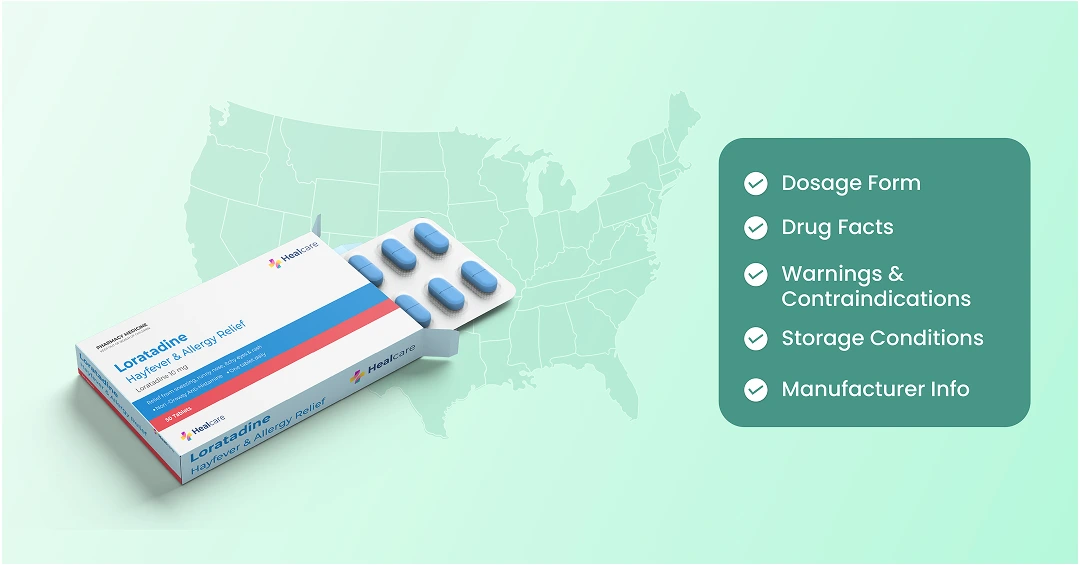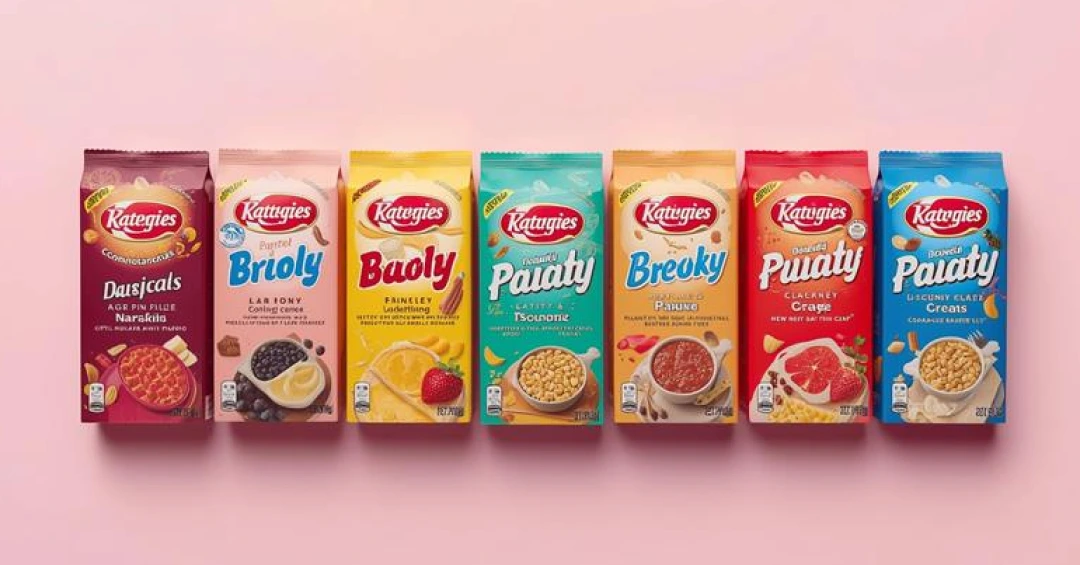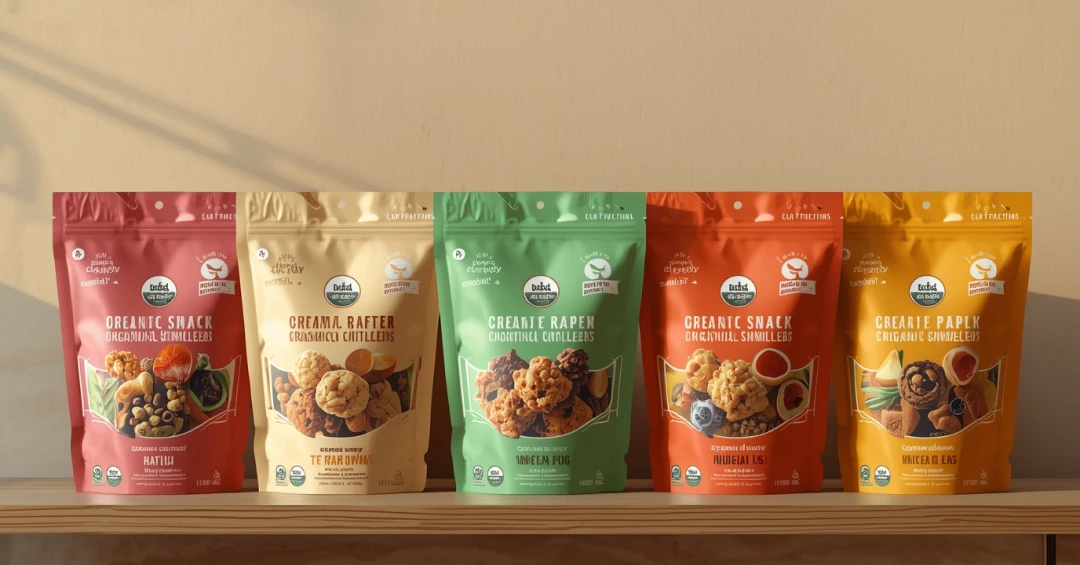In pharma labeling, wrongly printing critical information such as product name, dosage form, and strength can have far-reaching consequences. Not only can this jeopardize patient health, but it also risks violating the FDA’s long list of pharmaceutical labeling guidelines.
Pharma labeling is a complex endeavor, and it is critical to get it right the first time. Read as we delve into the intricacies of pharma artwork management and how companies can confidently navigate US regulations.
Understanding the Different Types of Pharma Products
- Prescription Drugs (Rx): FDA’s human prescription drug labeling guidelines necessitate:
- A summary of the essential scientific information needed for the safe and effective use of the drug.
- The prescribing information, including patient labeling for medication guides, patient package inserts, instructions for use, and carton and container labeling.
- Biologics: The FDA offers guidance to pharma companies for biological product labeling that span prescribing information and Patient Information, Medication Guides, and Instructions for Use. Recommendations include:
- Relevant data and information from the FDA-approved labeling for the reference product and any appropriate modifications specific to the biosimilar product.
- Product labeling should not include Clinical data supporting proof of bio similarity.
- Highlights of Prescribing Information to contain a “Bio similarity Statement” describing the meaning of approval as a biosimilar.
- Over-The-Counter (OTC) Drugs: OTC drug labeling requirements by FDA require pharma companies to use simple language in an easy-to-read format to help people compare OTC medicines, choose one that best fits their needs, and follow dosage instructions. FDA demands the information to be displayed in the following manner:
- The product's active ingredients, including the amount in each dosage unit.
- The purpose of the product and its uses.
- Specific warnings and a list of side effects, including when the product should not be used, when to consult with a doctor or pharmacist, and substances or activities to avoid.
- Dosage instructions, including when and how often to consume the drug.
- The product's inactive ingredients to help consumers avoid ingredients that may cause an allergic reaction.
- Medical Devices: FDA’s Medical device labeling requirements require pharma companies to display information such as
- Name and address of the manufacturer.
- Intended use.
- Adequate directions for use, including quantity of dose for each use, usual quantities for persons of different ages and physical conditions, frequency and duration of administration, method of application, and any preparation necessary for usage.
- Dietary Supplements: Dietary supplement labeling must include the following information on the front label panel or on the information panel, as mandated by the FDA
- Name of the supplement.
- Net quantity.
- Nutrient content claim.
- Ingredient list.
- Name and place of manufacturer, packer, or distributor.
Understanding the Different Types of Pharma Labeling
Accurate labeling is a critical requirement for pharmaceutical companies. During the development and design of pharma labels, they must consider the drugs’ intended use, users, and environment of use. To avoid medication errors and ensure compliance with necessary labeling rules and guidelines, pharmaceutical companies must first understand the different types of labeling and their requirements.
When it comes to pharma labeling, there are two types of labeling that companies need to master:
- Carton and Container Label: The FDA’s guidance on labeling cartons and containers emphasizes safety and provides principles and recommendations to promote safe dispensing, administration, and product use. It mandates that product container labels and carton labeling must communicate critical information necessary for safe and effective medication use throughout the medication lifecycle—from initial prescription and procurement to dispensing and administration. Key recommendations include:
- The product name, dosage, strength, route of administration, and warnings should be clearly displayed on the principal display panel, all within the same field of vision and free from clutter, extraneous text, or distracting images and graphics.
- Text must be easy to read, using an appropriate font size, style, and color contrast. Overlapping text should be avoided, especially on clear, transparent, or translucent container labels—such as those on syringes, ampules, vials, or intravenous bags.
- Labels should be easily distinguishable between different strengths of the same product or among multiple products within the same product line.
- Labeling of Patient Information Leaflets (PILs): Patient Information Leaflets (PILs) provide essential information that helps patients understand and safely use their medications. These leaflets support patients in participating more fully in treatments prescribed or recommended by healthcare professionals. They also empower individuals managing their own care by offering high-quality information for informed healthcare decisions. The FDA permits pharmaceutical companies to include critical content in PILs, such as:
- General guidance on the safe and effective use of the drug.
- Instructions on when and when not to use the drug, and how to take it.
- A list of possible side effects.
- Proper storage instructions.
- A complete ingredient list, including both active and inactive ingredients, and manufacturer details (e.g., “Manufactured for” and “Manufactured by”).
Labeling Tips and Best Practices for Pharma Compliance
Given the complexity of pharma labeling and the many requirements mandated by the FDA, companies must confidently embrace the right tools and approaches to navigate these regulations. Here are some labeling tips and best practices that can help streamline and simplify pharma compliance:
- Invest in a digital asset management solution: A modern digital asset management solution can enable pharma companies to have a centralized repository of all labeling assets and communication. This can streamline collaboration between various stakeholders, simplify version control, and ensure access to the latest labeling assets.
- Use AI Proofing tools: When a drug is in the market, it goes through numerous changes driven by regulatory or brand needs. A state-of-the-art AI proofing tool can streamline the artwork lifecycle management process, accelerating the review process. With capabilities that help adapt to frequent label changes from regular regulation updates, pharma companies can minimize pharma counterfeiting, ensure regulatory compliance, maintain brand consistency across all products and markets, and reduce the risk of recalls and non-compliance fines.
- Automate workflows: Automating typical labeling workflows is a great way to accelerate regulatory submissions and simplify artwork, print & packaging approvals. With access to automatic audit logs, task assignments, alerts and reminders, real-time status, and more, pharma companies can minimize labeling errors, quicken revisions, and effectively manage new requirements.
- Ensure seamless integration with other systems: Ensuring your digital asset management solution seamlessly integrates with other business applications is necessary to ensure accurate and comprehensive labeling. Integration with ERP systems, quality management systems, document management systems, laboratory management systems, etc., can allow pharma companies to minimize toggling between applications and entering data on multiple solutions – thereby minimizing the time to bring products to the market.
- Leverage templates to quicken compliance: Leveraging pre-built labeling templates is also a great way to quickly build, approve, and manage all packaging and print specifications across products. Companies can reuse existing specifications, customize requirements for various SKUs and components, and quicken time-to-compliance.
As pharmaceutical labeling regulations continue to evolve, navigating the lengthy list of requirements can be overwhelming for companies. To stay abreast of the latest labeling requirements and ensure continuous compliance for all your pharmaceutical products, you must embrace a modern artwork management tool.
Learn how ManageArtworks can help you easily traverse the complex web of pharma labeling requirements while reducing costs and mitigating risks.





.webp)
















